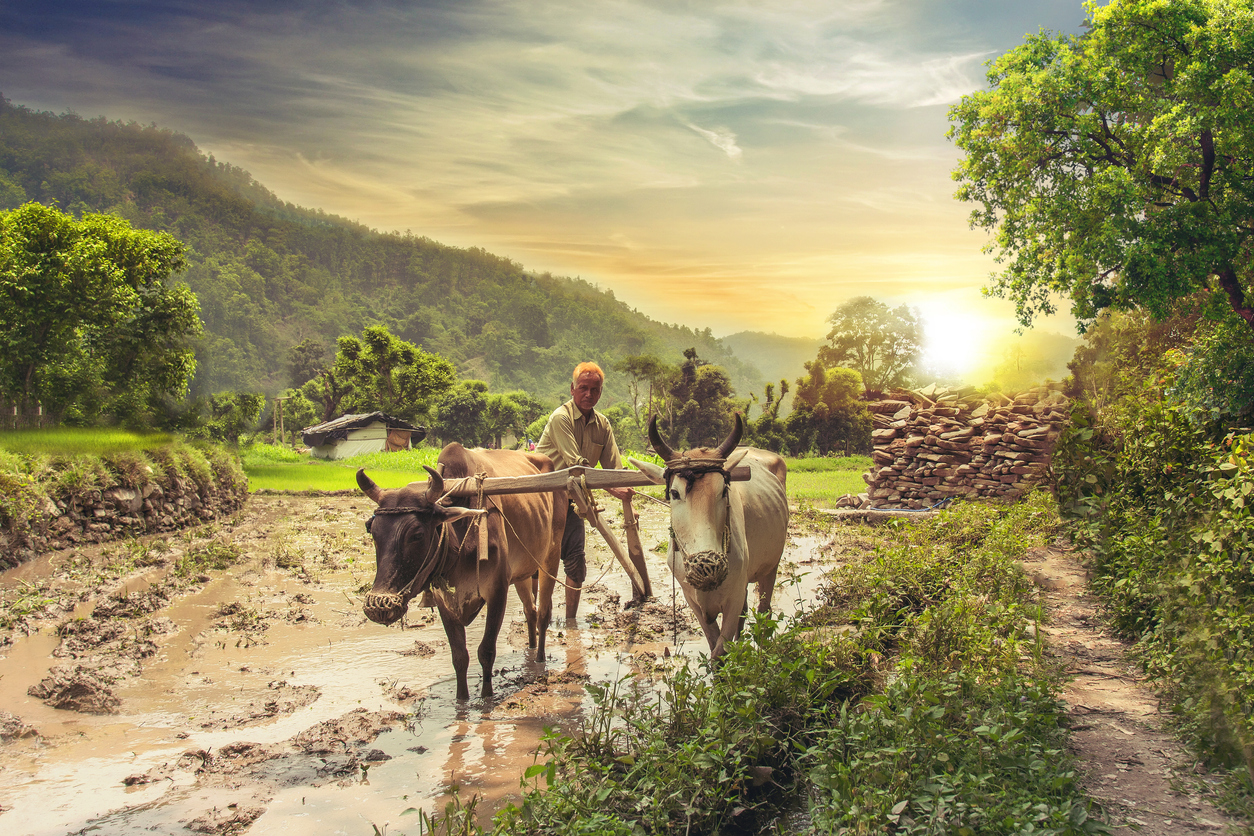
Capital Woes: Why Andhra farmers are angry

It was a time when land acquisition for major government projects invariably meant violent resistance and public protests, with memories of Nandigram and Singur in West Bengal being still fresh in public memory.
It was for this reason that the farmers voluntarily giving away their lands for Amaravati, the proposed dream capital city for Andhra Pradesh post-bifurcation, made headlines in 2014.
Not a semblance of protest or resistance. Over 28,000 farmers from 29 villages in the Vijayawada-Guntur region came forward to give more than 33,000 acres of land for the capital city project. The acquisition was done under land pooling scheme which made farmers the partners in the development.
“Acquiring land on such a large scale and seeking to transform the local economy into a modern, urban economy was a challenging task. But, we succeeded in convincing the people about the benefits that the capital city will bring in and how it will make the economy vibrant,” recalls a senior official who was associated with the land pooling programme.
The land pooling concept in Amaravati was hailed as a great model for development in India by several experts. “Modi should take thousands of farmers from Bihar and other states to meet the farmers in AP who are voluntarily pooling their land”, well-known economist Swaminathan Anklesaria Aiyar wrote in 2015, enthused by the new experiment in Andhra.
Also read: It’s official, end of Amaravati dream for Andhra Pradesh
Dreams come crashing
Five years later, the farmers are staring at an uncertain future. Ever since the Chief Minister Y S Jagan Mohan Reddy’s announcement that there would be three decentralised capitals—Visakhapatnam as executive capital, Amaravati as legislative capital and Kurnool as judicial capital—, the farmers, anxious over their fate, have spilled onto the streets.
Never known to indulge in violence, the Andhra farmers have been on relay hunger strikes demanding justice. The protests are gathering momentum with support pouring in from the opposition parties and various civil society organisations.
“We feel cheated now. We had voluntarily given our lands in the hope that a modern capital city will come up in our region and our living standards will improve,” said a woman farmer, Padmavathamma, at a hunger strike camp near Tullur in Guntur district.
The agitating farmers wonder why the Chief Minister made the U-turn now on the location of capital city when, as the opposition leader, he had agreed for it on the floor of the Assembly five years ago.
“We were approached (by the then TDP government) only reaching a political consensus. We gave the lands in good faith. How can the new government now go back on it? What will happen to our future?” lamented another farmer R Ramanaiah.
“This is probably for the first time in the country that as many as 28,000 farmers, who joined a voluntary land pooling scheme to create a land bank for the government, have taken to the streets,” says senior political analyst K Ramesh Babu.
“A socio-political and economic model that should have been the pride of Andhra Pradesh is now in tatters as a result of the short-sightedness of the political class,” he says.
Also read: Jagan’s please-all 3-capital scheme: Tokenism or equitable development
Uncultivable lands
None of the farmers in the region was enthusiastic about the idea of taking back their lands, if such an option is offered to them by the YSRCP government.
“How is it even possible? Roads have come up on our lands. And, plots have been allotted to other farmers in our lands. Similarly, we have got plots in others’ lands,” said B Srinivasa Rao, pointing towards the road widening works near his village, Rayapudi.
A real estate consultant G Srinivasa Rao in Tulluru town questioned the rationale behind the opting for three capital cities.
“It is a good thing to decentralise the administration but we need to development one big city which can attract national and international investments.
“All farmers had voluntarily given their land for capital city in the hope that the region will see a massive development and bring in new opportunities for their children. We need a capital that can compete with Hyderabad and other cities,” he said.
“All construction activity has come to a grinding halt. The youth in our villages are sitting idle because they have no work,” said Kommineni Poornaiah, a farmer at Uddandarayunipalem village, about 30 kms from Vijayawada. It is here that Prime Minister Narendra Modi had laid the foundation stone for the capital city in October, 2015.
Also read: Andhra Pradesh may have three capitals, indicates CM Jagan
Question mark over benefits
The land pooling scheme was successful because the farmers were convinced that they would be benefitted in the long run by becoming part of a vibrant urban economy.
After losing Hyderabad to Telangana in the bifurcation exercise, the residual state of Andhra Pradesh was keen on building a similar city to serve as a powerhouse of economic activity and a leading international investment destination.
The farmers were to get 31.60 per cent of ‘Returnable Land’ in the capital city area after it was developed as per international standards.
For example, the farmers were given 1,000 square yards of residential and 250 square yards of commercial parcel per every acre of dry land alienated. It was 1,000 square yards of residential and 450 square yards of commercial land per acre if it was wetland. Besides, they also got other benefits such as one-time agricultural loan waiver of up to Rs 1.50 lakh per family.
Since the farmers also would have lost their regular income, the then government also provided for payment of Rs 30,000 to Rs 50,000 per annum as an annuity for a period of ten years per acre of land alienated.
It is unclear now what will happen to all the pooled land if the Jagan government were to go ahead with limiting Amaravati for merely conducting Assembly sessions.
“We have recommended to the government that it can return the lands to farmers,” said G N Rao, a retired IAS officer and chairman of the five-member expert committee that examined the issue of location of capital city and other urban related policies.
However, the farmers are not enthusiastic about taking back their lands.
The agriculturally rich area has now become fallow since construction work began in 2017. Besides, the land has been dug out at several places for the construction of roads — some of them six-lane — and for building several structures such as the upcoming high court building.
Already, an interim government complex, a civil courts complex in which the Andhra High Court is presently functioning from, and a temporary Assembly building has been operational.
Also read: Battle over Amaravati spills to the streets, Naidu’s convoy attacked
According to government figures, nearly Rs 9,000 crore was already spent on the infrastructure in Amaravati.
Worried over their future, the farmers and their families have now taken to the streets. The irony is that the farmers who gave away their lands as part of a social contract without receiving immediate compensation are now in the doldrums. “The bitter experience has shattered their faith in the institution of government and the sanctity of contracts,” Ramesh Babu said.
The urban planning experts have also questioned the rationale behind a smaller state like AP going for three capital cities. “It will lead to a lot of administrative problems. Every time there is an assembly session, the entire administration will have to move to Amaravati. Similarly, the officials will have to make rounds to Kurnool, which is more than 750 km away from Visakhapatnam, to attend to court cases,” said Vishweshwar Reddy, an urban planner.
“Having multiple capital cities will lead to unnecessary recurring expenditure,” said Dr K Nageshwar, political analyst and former head of the Journalism Department, Osmania University.
While Amaravati is centrally located in the bifurcated AP, Visakhapatnam is located in one corner of the state, almost closer to Odisha.
Also read: YSRCP govt scraps Amaravati capital city startup area project
Opposition support
The opposition parties—TDP, BJP, Jana Sena and the Left— have thrown their weight behind the protesting farmers. The state BJP chief K Lakshminarayana met with the agitating farmers and assured them of his support. He, along with the leaders of other opposition parties, urged government to reconsider its decision on shifting the capital from Amaravati.
“The state capital should not be changed whenever a regime changes. The union government granted funds for the development of the capital after the farmers surrendered their lands. The state’s development will be hit if the capital is relocated,” the BJP leader said.
“Such decisions only prove that this is a Tughlaq regime. How can there be three capital cities for a state? Where does Jagan live – Visakhapatnam or Amaravati or Kurnool? Should people run from one region to another region for their works?” Chandrababu Naidu wondered.
The protesting farmers have sent letters by Speed Post to Prime Minister Narendra Modi to intervene in the matter and prevail upon the state government not to shift the state capital from Amaravati.
The women members recited ‘Vishnu Sahasranama’ and offered special prayers at Uddandarayunipalem village where the foundation-stone was laid for development of Amaravati.





